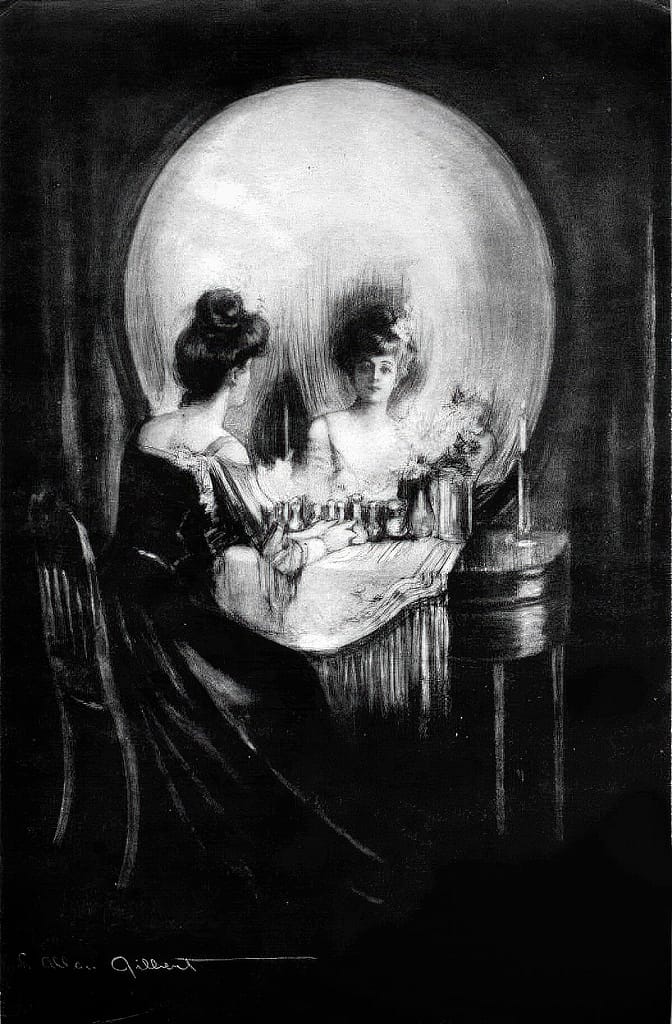A history buff, Alexander McQueen has always nurtured a certain fascination for the macabre and bizarre. One of his favorite motifs, the skull, erected as a quasi-logo long before the Kooples, Zadig and co., perfectly illustrates his vision of existence, just as it heralded his tragic and abrupt death on February 11, 2010.
If Alexander McQueen had belonged to one of those socio-cultural tribes that inspire the fashion sphere, it would inevitably have been the Goths.
Just look at his collections, his shows, his reflections and a certain macabre imprint… Even his tragic end subscribes to it, if we consider that the original Gothic philosophy is marked by an aestheticization of suicide.
Just like skeletal white, dark black adorns her collections, a direct legacy of the Victorian period. Indeed, devastated by the death of her husband, Prince Albert, from typhoid fever in December 1861, Queen Victoria decided to mourn for the rest of her life, for 40 long years.
Macabre elegance
Lee, renamed Alexander for his more aristocratic sound, was born in 1969 in London’s East End. It’s fair to say that death has always hung more or less over the head of this youngest of a working-class family of six children. Cherished by his mother, he was bullied by his schoolmates and, at the age of eight, witnessed his older sister being abused by her husband. His life then took the form of a battle against his cocaine addiction and his HIV status. These experiences had a lasting impact on his vision of existence, with pain, survival and violence as his favorite themes. A violence – rather psychological – that he would experience again when he took over as head of Givenchy’s collections in 1996, considering that he was not treated as well as his predecessor John Galliano, who had then left to join the House of Dior, or when his own Maison de couture suddenly came under the control of the rival Kering group (then PPR) in 2001.

The first traces of the skull motif appeared in the designer’s end-of-year show in 1992, when he was studying fashion at the prestigious Central Saint Martin, financed by his aunt. In this collection, entitled “Jack The Ripper stalks his victims ”, the models sported the famous skeletal motif that reflects Alexander McQueen’s anti-conformist stance. The choice of this dark yet provocative symbol testifies to the British couturier’s desire to challenge social perceptions of beauty and fashion, long before the Gen Z cohort.
The sinister motif came to haunt the spring-summer 2003 collection, entitled “Irere”. It appeared embroidered on flowing floral dresses. It is this skull in a stylized, flowery version that has been chosen as the official poster for the Lionsgate-distributed documentary McQueen (2018) , dedicated to fashion’s enfant terrible. Documentary filmmakers Ian Bonhôte and Peter Ettedgui opted for a trompe-l’œil, almost mystical technique already at work in the Romantic era, that of pareidolia, or the ability to recognize familiar forms – like a skull here – in a landscape, a cloud, a work of art, an ink blot…

McQueen’s skull was not just a print on elegant, melancholy outfits. It also inspired handbags or decorated scarves, as evidenced by the 2011 retrospective exhibition at the Metropolitan Museum of Art, entitled “Alexander McQueen: Savage Beauty.”
Memento Mori
Read also > A Brief History of Luxury: the Louis Vuitton trunk, a flat box that’s a hit
Featured Photo: © Lionsgate




















